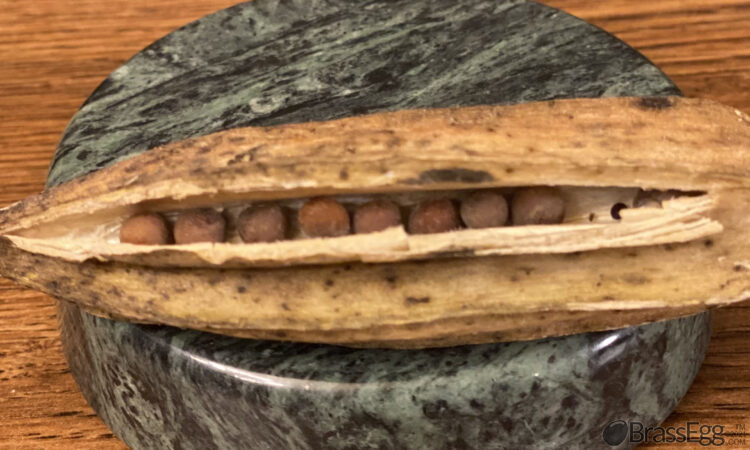I tend to over-buy things that I like. I didn’t use to be like this, but after living in England for three years and discovering that Oreos are only sold in the store 3 weeks in the year I became a ‘stocking up’ kind of girl. When we came back to America and had the chance to garden I became fascinated with seeds and acquired far more than my tiny heavily shaded back yard could handle.

Add to this the desire to save my own seeds and I had to find a way to improve my seed storage technique. Mimicking nature becomes the secret here. Keeping the seeds cold can keep them in a hibernation state. In fact, when planting Rye Grass it was suggested to freeze the seeds before sowing them to improve the germination rate. Supposedly this would mimic nature’s winter/spring cycle and hopefully trigger a more vigorous response from the seed.

Freezing doesn’t work with many tubers or root stock (a few do great, but many don’t). Even professional seed collectors find that most tubers only last 18 months. I have not had good luck with saving bulbs and I have had asparagus struggles in the past, so I don’t know if my Mary Washington Asparagus will sprout next year, or if my daughter will be able to get the Ranunculus to bloom. If you want potatoes and you don’t want to study the different kinds, just grab the ones that sprout in your pantry this spring and plant them in your garden. Have yourself a fun surprise!

Stirring my Amaranth seed each day creates a puff of dust. There might be trapped moisture in the seeds that I can not fully release with just air drying in a climate-controlled house. For seed saving in particular I rely on freezing to get that little extra protection from moisture, tiny seed eating bugs and potential mold spores that turn into rot.

For the Amaranth, I stirred it one more time really well, then separated it into smaller paper bags. Labeled them with year, name of strain and seed company that parent seed came from and secured the tops. Here are all my saved seeds together. The Okra, Marigold, Lettuce and Cilantro regardless of year will be bundled with the Amaranth so I can find them quickly.

In the coming spring, saved seed and clearance hybrid seeds will be the first things planted as I try to convert the clay construction site into a thriving garden area. Having armor on the soil and a living root in the soil is tantamount to kick-starting good soil…so I will risk these cheaper seeds in hopes that a late frost won’t kill them. I also won’t kill weeds in the traditional sense because weeds can serve a purpose when the soil is this bad. Instead weeds will be bent over if they begin to overly shade the seedlings.

When there is truly no danger of frost the more expensive and curated seeds will be planted. Seed varieties that I know my family loves to eat like the buttery lettuce that Martha Stewart no longer sells. There is the Rosemary that we hold onto in case we can’t find a seedling or plant to buy. There are the seeds that come with a great story like the Mortgage Lifter Tomato that is said to have single-handedly paid off a farmer’s mortgage. And then there are the novelty seeds that our children beg for that will thrill the whole family.

A word about cheap seeds, clearance seeds and seeds when someone is empting out their garage. The cheap seeds at Dollar General are often hybrids, and there is nothing wrong with that, but you should be aware that saving seeds from the hybrid will result in a very different plant than the parent. Taking all seeds that are given you or even buying ones at steep discount (I got this stash at 90% off at the end of summer) gives you a huge variety to test out. Storage is the key here. If the seeds were for sale inside an air-conditioned space the clearance seeds should be fine (root stock and bulbs might not do so well). If someone gives you a box of seeds from their detached, moist garage just be careful. I would store all those seeds together away from my other seeds, wrap them in plastic and put them in the freezer. There may be all sorts of living things in those seeds from moths to weevils to mold spores. There may also be a seed in there from a nearly extinct strain of corn. If you like variety in your life, this is a huge opportunity. Store it effectively and buy yourself time to discover what works for you.
Brass Egg™ participates in affiliate marketing programs, and may receive compensation when you click and purchase from links to retailers. Brass Egg™ of Russell Holdings Group, LLC 2021. All content ©2021 Russell Illinois Holdings, LLC. All Rights Reserved.




















